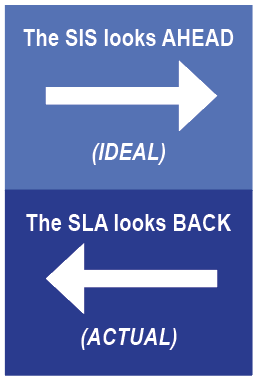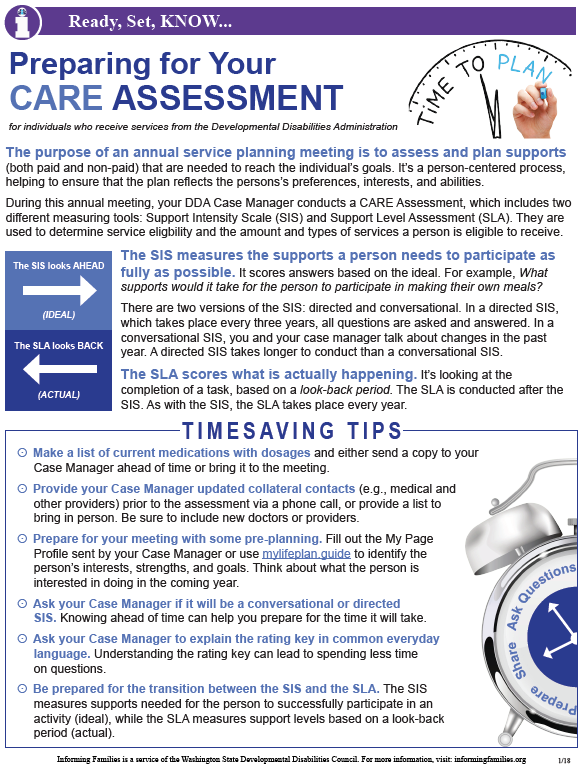for individuals who receive services from the Developmental Disabilities Administration
Assessing & Planning
The purpose of an annual service planning meeting is to assess and plan supports (both paid and non-paid) that are needed to reach the individual’s goals. It’s a person-centered process, helping to ensure that the plan reflects the person’s preferences, interests, and abilities.
During this annual meeting, your DDA Case Manager conducts a CARE Assessment, which includes two different measuring tools: Support Intensity Scale (SIS) and Support Level Assessment (SLA). They are used to determine service eligibility and the amount and types of services a person is eligible to receive.
SIS
 The SIS measures the supports a person needs to participate as fully as possible. It scores answers based on the ideal. For example, What supports would it take for the person to participate in making their own meals?
The SIS measures the supports a person needs to participate as fully as possible. It scores answers based on the ideal. For example, What supports would it take for the person to participate in making their own meals?
There are two versions of the SIS: directed and conversational. In a directed SIS, which takes place every three years, all questions are asked and answered. In a conversational SIS, you and your case manager talk about changes in the past year. A directed SIS takes longer to conduct than a conversational SIS.
SLA
The SLA scores what is actually happening. It’s looking at the completion of a task, based on a look-back period. The SLA is conducted after the SIS. As with the SIS, the SLA takes place every year.
Time Saving Tips
- Make a list of current medications with dosages and either send a copy to your
Case Manager ahead of time or bring it to the meeting. - Provide your Case Manager updated collateral contacts (e.g., medical and other providers) prior to the assessment via a phone call, or provide a list to bring in person. Be sure to include new doctors or providers.
- Prepare for your meeting with some pre-planning. Fill out the My Page Profile sent by your Case Manager or use mylifeplan.guide to identify the person’s interests, strengths, and goals. Think about what the person is interested in doing in the coming year.
- Ask your Case Manager if it will be a conversational or directed SIS. Knowing ahead of time can help you prepare for the time it will take.
- Ask your Case Manager to explain the rating key in common everyday language. Understanding the rating key can lead to spending less timeon questions.
- Be prepared for the transition between the SIS and the SLA. The SIS measures supports needed for the person to successfully participate in an activity (ideal), while the SLA measures support levels based on a look-back period (actual).








